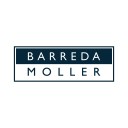New Copyright Limitations

Published byBarreda Moller

As established by copyright law, the copyright owner has the exclusive right of exploiting his/her work in any way or by any procedure, and obtaining benefits, except in the cases of express legal exception. This right comprises the exclusive authorization to publicly reproduce or communicate the work in any way or by any procedure, to distribute said work to public and, in general, any other way of using the work not contemplated by law as exception to the author’s exclusive rights. Nevertheless, this right in not unrestricted but it is limited with the purpose of achieving a balance between the fair aspirations of copyright owners of obtaining a benefit for their intellectual creations and the interest of the society as a whole of being able to take advantage of and use said intellectual creations to the benefit of the social and cultural progress, education, knowledge spreading and healthy recreation.
A copyright limitation is the possibility of reproducing, communicating or distributing publicly the intellectual work without previous authorization of the copyright owner and/or without the payment of a compensation for said act. Every copyright exception or limitation varies in terms of the special characteristics of the legislation of each country and the social, economic and politic peculiar features of each society. In general, the groups of copyright limitations are two: the first is “temporality” of the right, in other words, that the right has a certain duration after which, the works become of public domain and can be freely used by anybody; and the second group which comprises the so-called “fair uses” which, following the definition contained in the Glossary of Copyright and Related Rights of the World Intellectual Property Organization (WIPO), indicates that any use of the intellectual work considered as copyright exception and, therefore, exempt from obtaining the previous author’s authorization for the reproduction, communication or distribution to the public, must not interfere with the normal exploitation of the work neither must it cause an unreasonable prejudice to the legitimate interests of the author.
As general rule, copyright limitations contemplate what doctrine and Comparative Law have called “three-step rule”, in other words, any Copyright limitation: (i) must have exceptional character, that is, it must be imposed in certain special cases; (ii) it must not jeopardize the normal exploitation of the intellectual work; and (iii) must not cause unjustified prejudice to the legitimate interests of the owner of the right.
Some new copyright limitations, related to the use and benefit from intellectual works with educational purposes, have been recently established. Law Nº 30276 published in the official journal “El Peruano” on December 3, 2014 modifies the Copyright Law passed by Legislative Decree Nº 822. The first of these limitations refers to the possibility of lawfully communicate, without need of the author’s authorization nor the payment of any remuneration, intellectual works with exclusively didactic purposes, in the course of the activities of a teaching institution by the staff and students of said institution, provided the communication does not pursue for-profit purposes, direct or indirect, and the public be exclusively composed of the staff and students of the institution or parents or tutors of the students and other persons directly related to the activities of the institution. In case the communication, including making available the works to public, is about reproduced works already lawfully disclosed, the public will be limited to the staff and students of the teaching institute. Moreover, with respect to the already lawfully disclosed works, it is further established that it is allowed, without the author’s authorization, the reproduction by reprographic, digital means or other similar, for teaching or for taking of exams at educational institutions, provided there are no for-profit purposes and to the extent justified by the pursued objective, of articles, speeches, original phrases, single poems, or short extracts of works or the full-length version of single works of plastic or photographic nature, lawfully published and on the condition that said use is according to the honest use (obligatory citation of the author) and that the same is not object of sale or other onerous transaction, nor has direct or indirect for-profit purposes. Basically, what allows this copyright limitation is that teachers and students, parents or tutors of the students and other people directly linked with the activities of the educational institution (schools, universities, academies, institutes, etc.) can communicate and reproduce the already disclosed intellectual works even by digital means or other similar, provided that communication has not for-profit, direct or indirect, purposes. Legislation did not contemplate before the possibility of using digital means for the communication and reproduction of said intellectual creations.
The second limitation is related to the possibility that the public borrows the licit copy of an intellectual work from a library or archive which activities do not have directly or indirectly for-profit purposes. This intends that libraries, archives and centers of documents may preserve and at the same time make intellectual works more public-friendly. The modification widens the exception, limited before to works expressed in writing, to other formats such as the digital format which corresponds to the requirements of information, teaching and learning developed by new technologies in the virtual age of the information society, in which the downloading of works in digital and electronic formats have taken the place of reprography.
These new copyright limitations are in addition to those established by Law Nº 27861 which allows the reproduction without the author’s authorization of works already disclosed for the private use of blind persons provided the reproduction is made by the Braille system or other specific procedure and that the copies do not have as purpose the for-profit use.

